I bet most readers of this blog have never heard of the Euville stone.
And yet, this building material has given rise to some of the most famous monuments in France. But before telling you more, let’s dive into the history… to discover the national and international epic of this Meuse limestone.
What is the Euville stone?
According to Wikipedia, Euville stone is a type of stone used in the construction of many buildings. It is limestone with pinkish-beige and yellowish Indian beads from the Upper Jurassic.
An Indian bead is the remains of fossilised crinoid stems (cousins of sea urchins and starfish).
Why Euville?
Euville is the name of a large village of 1600 inhabitants in the Meuse département [55], located only three kilometres from Commercy.
Commercy, doesn’t that remind you of anything?
Yes, it does, the famous and delicious madeleines!

(By the way, the recipe is here on the blog!)
But let’s get back to Euville.
The town has been home to stone quarries for centuries: the famous Euville limestone.
But to be more precise, Euville stone is also quarried in Géville and Commercy, in the Meuse hills.
In the past, other older quarries existed in Sorcy and Lérouville, but they have since closed.
![Quarry of Lérouville in 1889 [Public Domain via wikimedia commons]](https://frenchmoments.eu/wp-content/uploads/2022/04/Carrière-de-Lérouville-Maillemont-en-1889-public-domain-via-wikimedia-commons.jpg)
The only stone quarry in Euville still in operation is operated by Rocamat, the French leader in limestone extraction. The company extracts between 60 and 80 m³ of stone per week. The material is sold to stonemasons in France, the Benelux countries and even England. Today, the company is the only one to produce the famous Euville stone… in Euville!
Why is Euville stone so popular?
The architects fell in love with this extremely white stone. This is due to the absence of iron oxide, in contrast to the yellow-honey colour of Jaumont stone – the favourite stone of Metz. Its very fine grain has earned it a good reputation in France and Europe.
But above all, Euville stone does not crack under the action of frost and is weather-resistant!
Sorcy stone: a Lorraine material in the Middle Ages
In the Middle Ages, Sorcy stone was used by architects in the region. Similar to Euville stone, it was quarried a few kilometres from the Euville quarries (towards Pagny-sur-Meuse). The material is found in the cathedrals and churches of Lorraine.
It was a favourite stone for Ligier Richier, the sculptor of the Lorraine Renaissance.
The quarries where Sorcy stone was extracted are now closed, but there is nothing to stop you from admiring the beautiful buildings built before the 18th century:
The basilica of Saint-Nicolas-de-Port
(16th century)
![Basilica of Saint-Nicolas de Port © G.Garitan - licence [CC BY-SA 4.0] from Wikimedia Commons](https://frenchmoments.eu/wp-content/uploads/2022/04/Basilique-Saint-Nicolas-de-Port-©-G.Garitan-licence-CC-BY-SA-4.0-from-Wikimedia-Commons-scaled.jpg)
The church was built by the Duke of Lorraine René II to thank God for his victory at the Battle of Nancy in 1477. Built between 1481 and 1545 in the flamboyant Gothic style, the basilica of Saint-Nicolas-de-Port has dimensions worthy of a large cathedral with its nave 30 metres above the ground and its two towers 85 and 87 metres high.
Saint-Etienne de Toul Cathedral
(13th-16th centuries)
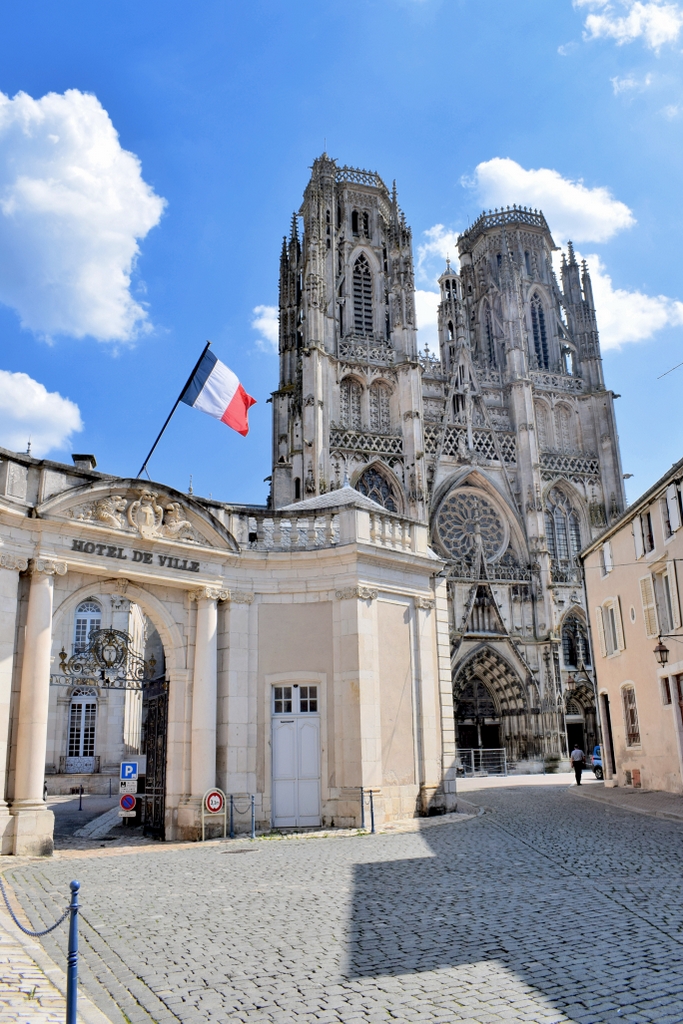
According to sources, the beautiful Gothic cathedral of Toul was built of Viterne stone and Balain stone. Sorcy stone is mainly used in the statuary. However, as time went on, Euville stone was used. During the restoration of the cathedral (after the damage of the Second World War), Euville stone was used extensively.
The sculptures by Ligier Richier
(16th century)

The sculptor Ligier Richier (Saint-Mihiel, c. 1500 – Geneva, 1567) is famous in Lorraine for his Renaissance-style works, which can be seen in the Meuse and Meurthe-et-Moselle départements. His creations of religious inspiration include numerous statues, including:
- the Passion altarpiece in Hattonchâtel
- the Entombment of Saint-Mihiel (Saint-Etienne church)
- the recumbent statue of Philippe de Gueldre in Nancy (Cordeliers church)
- the Transi of René de Chalon in Bar-le-Duc (Saint-Etienne church)
The Abbey of the Prémontrés of Pont-à-Mousson
(18th century)
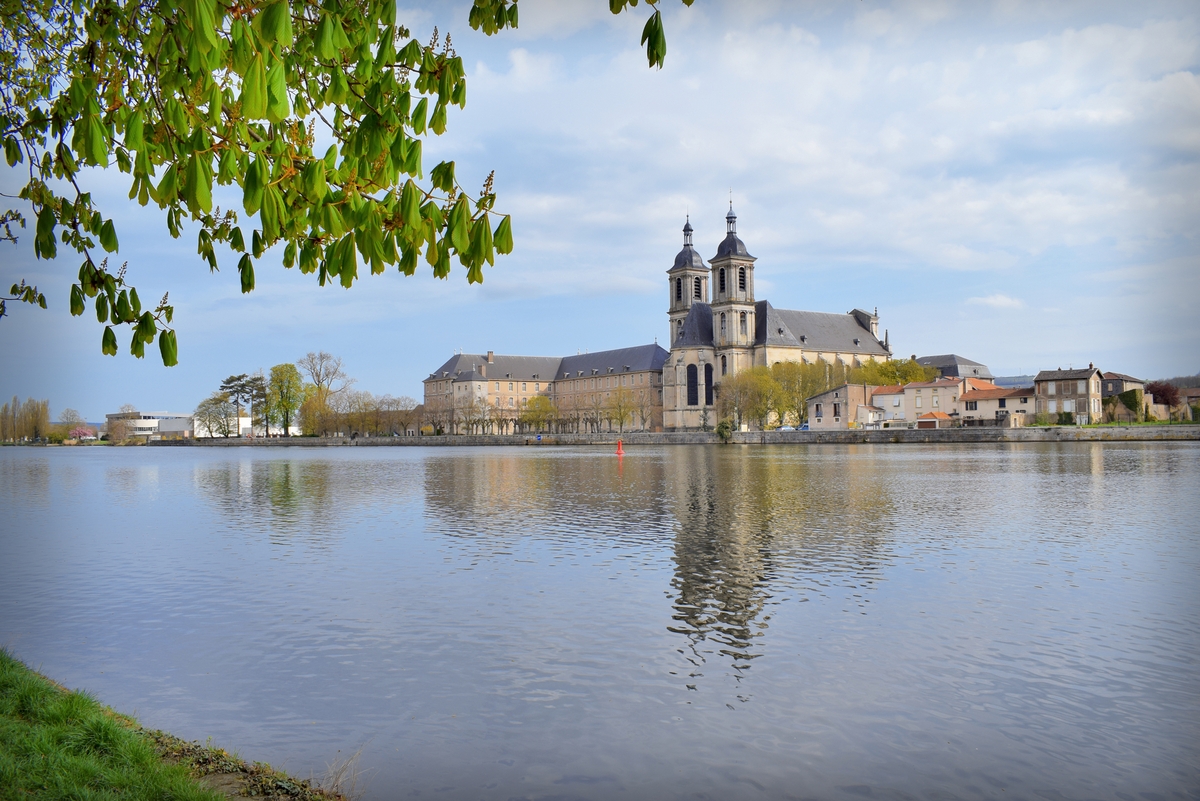
Now disused, the Premonstratensian Abbey of Pont-à-Mousson is a vast complex built between 1705 and 1735. The abbey church, a mixture of baroque and classical styles, faces the Moselle River.
The history of Euville stone in Lorraine
The Meuse has always been a land of building stone exploitation.
In the past, the department had up to 328 quarries for a total of 665 communes.
But the epic of Euville stone began in Commercy in the 18th century.
It was the princely visits to Commercy that began to stimulate the exploitation of the local stone.
There were the people of the Cardinal de Retz, Archbishop of Paris, those of the Prince of Vaudémont, the small world of the Duchess Elisabeth-Charlotte and then the summer stays of the Duke of Lorraine, Stanislas the bon vivant.
The town (about 1000 inhabitants at the beginning of the 18th century) became too small for all these people.
More had to be built.
A castle, mansions, outbuildings…
So, to meet this prodigious construction drive, the stone was taken from the surrounding quarries, particularly in Euville.
![Euville Stone - Commercy Chateau Stanislas © Ketounette - licence [CC BY-SA 4.0] from Wikimedia Commons](https://frenchmoments.eu/wp-content/uploads/2022/04/Commercy-Chateau-Stanislas-©-Ketounette-licence-CC-BY-SA-4.0-from-Wikimedia-Commons-scaled.jpg)
Euville stone in Nancy
But that’s not all… the beautiful white stone was to become famous when the architect Emmanuel Héré used it to build the royal square desired by Stanislas in Nancy.
As a reminder, Stanisław I Leszczyński (1677-1766) was King of Poland (1704-1709 then 1733-1736) before becoming Duke of Lorraine and Bar. As the father-in-law of Louis XV, he wanted to create a square dedicated to the King of France (hence the name “Place Royale”). Inaugurated in 1755, this square is now known as Place Stanislas and has been a UNESCO World Heritage Site since 1983.

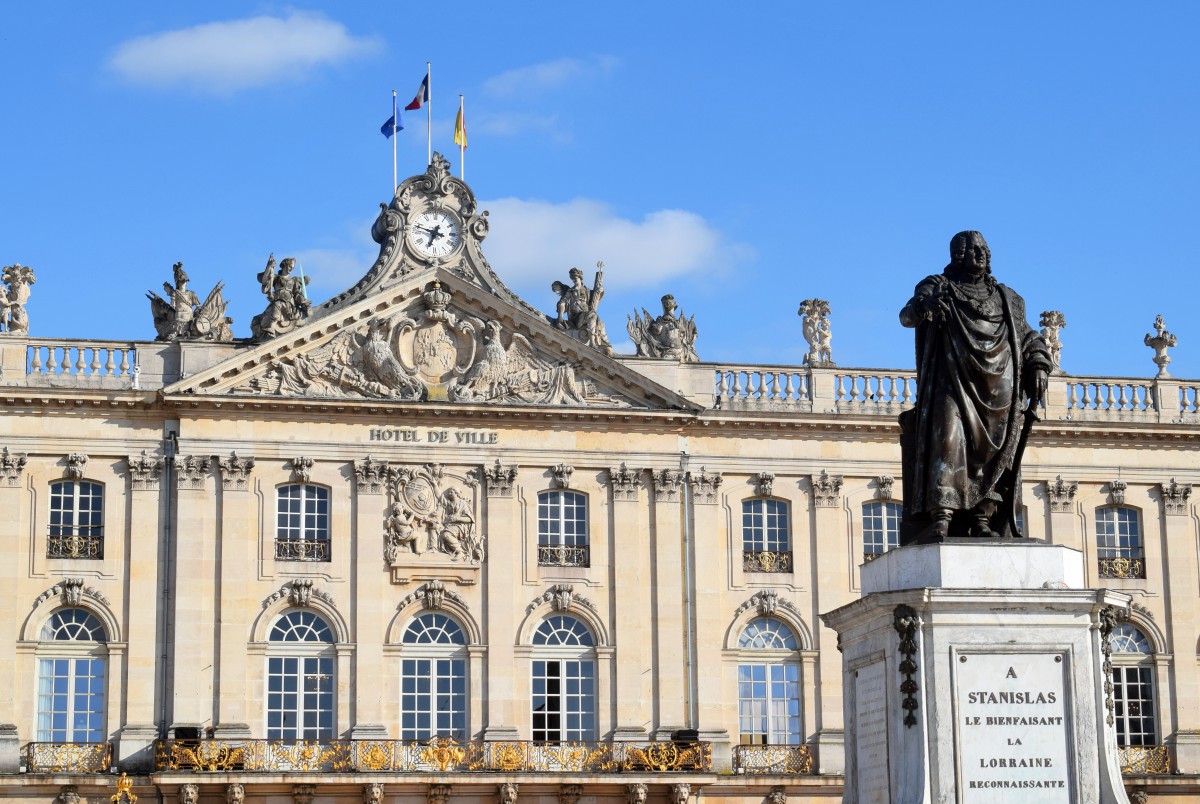
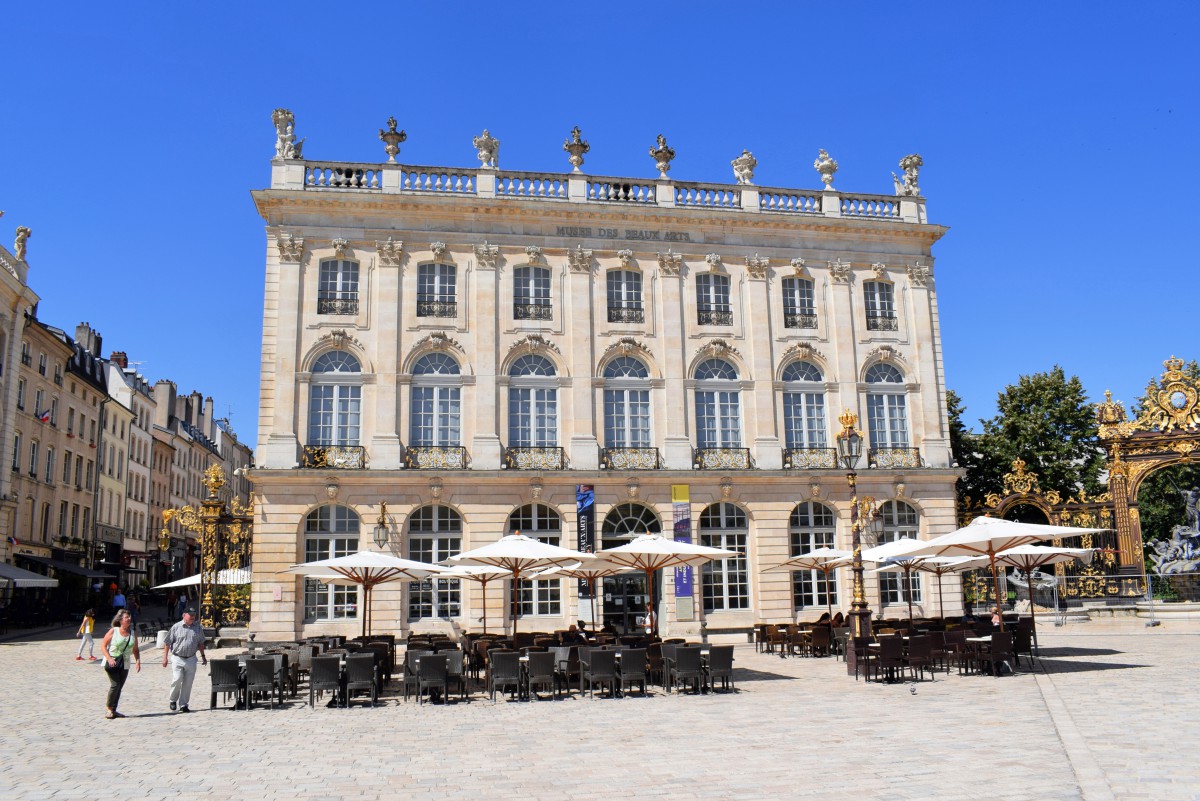
While Metz was adorned with the beautiful stone of Jaumont… Nancy adopted the magnificent stone of Euville!
The Meuse limestone can be found in many of Nancy’s buildings constructed from the 18th century onwards.
This is particularly true of the Saint-Epvre basilica. The architect Prosper Morey built the neo-Gothic church in Euville stone from 1864 to 1874. With its 87-metre high spire, Saint-Epvre is an important landmark in the city.
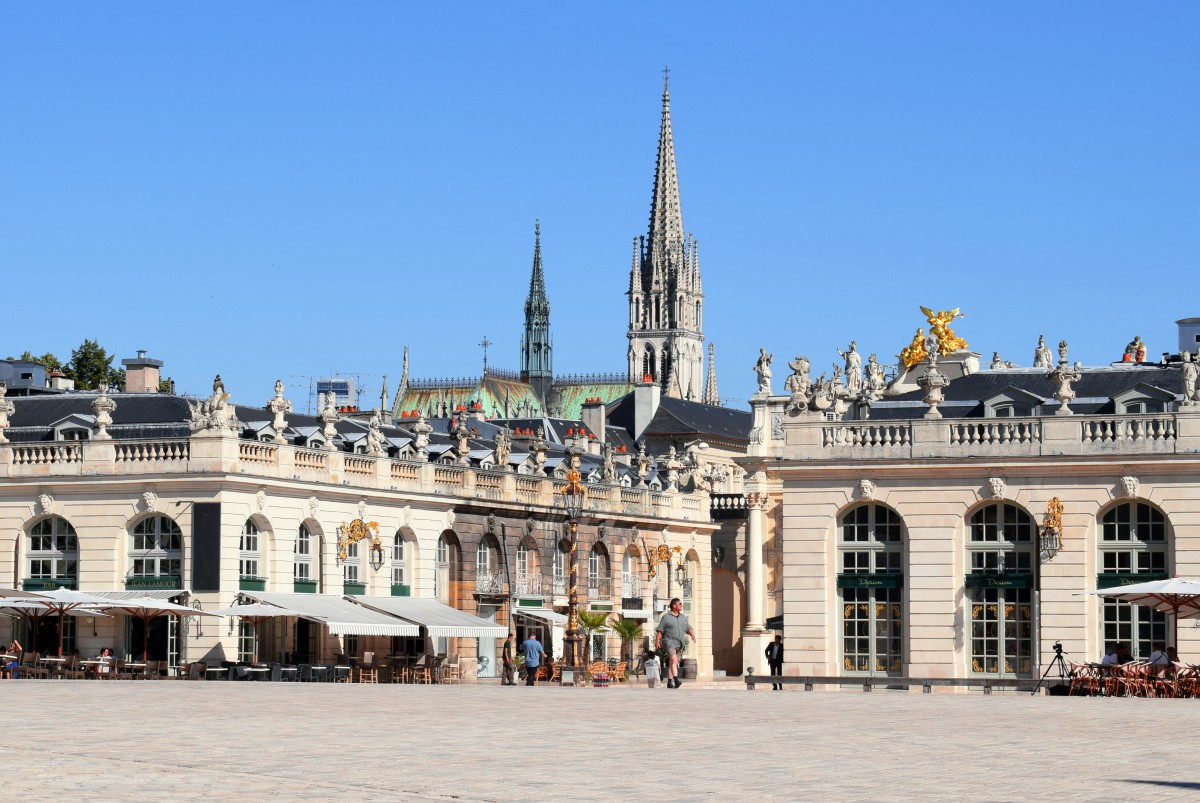

The Nancy School
Euville stone was also the preferred material of the architects of the Ecole de Nancy, the Art Nouveau movement of the late 19th century.
As you stroll through the city’s Art Nouveau districts, you will find the beautiful limestone on buildings.


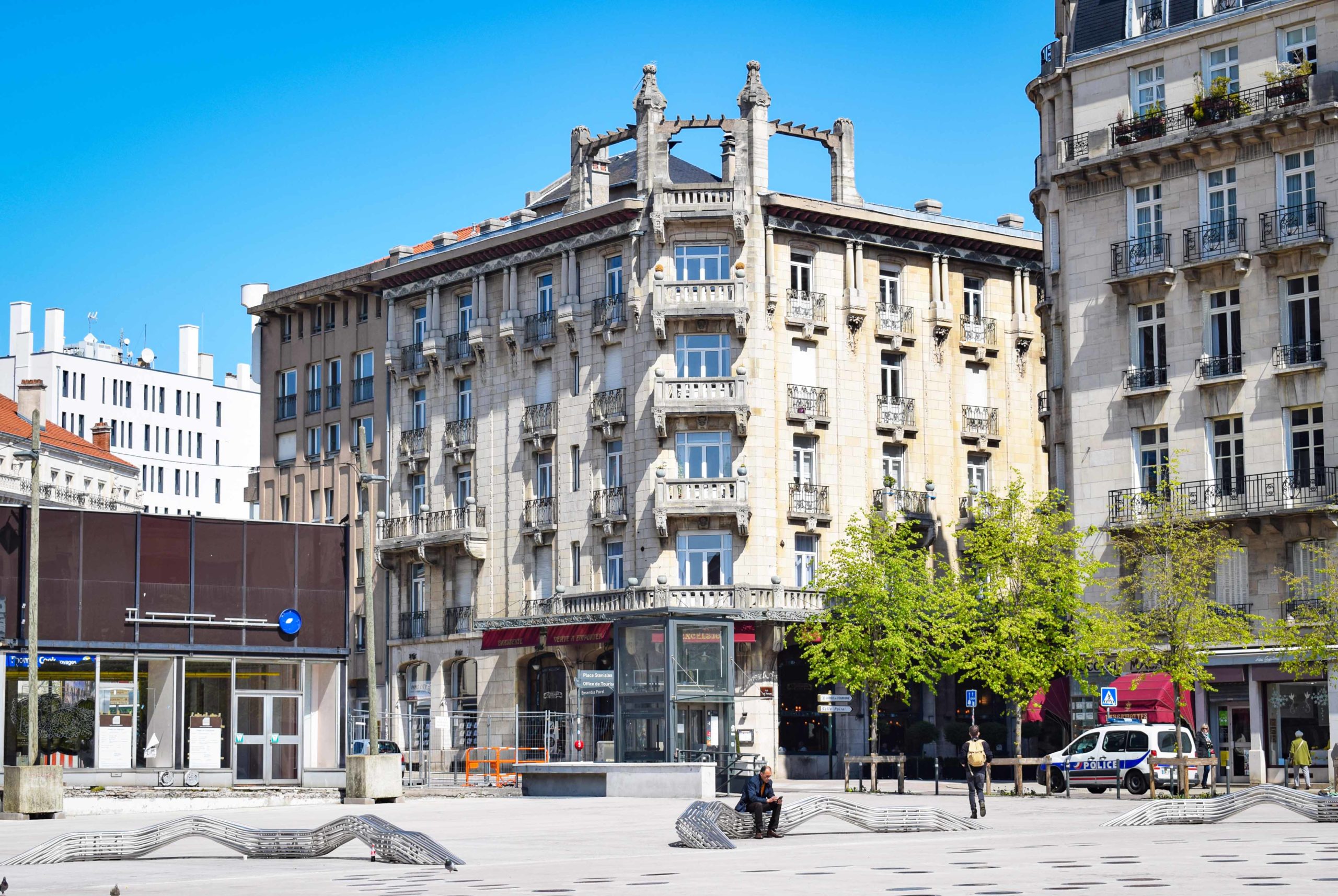
Euville stone in… Euville!
Unsurprisingly, Euville stone can be found in Euville itself.
The large village has two buildings that seem oversized for the size of the commune!
The first is the Euville town hall (1903). It is the only public building built in the Ecole de Nancy style. Its sober façade includes a large bay window in the centre. Inside, the stairwell features a magnificent stained glass window by Jacques Grüber.
![Euville town-hall © Havang(nl) - licence [CC0] from Wikimedia Commons](https://frenchmoments.eu/wp-content/uploads/2022/04/Euville-mairie-©-Havangnl-licence-CC0-from-Wikimedia-Commons-scaled.jpg)
The other monument built with local stone is the Saint-Pierre-et-Saint-Paul church, completed in 1892. The neo-Romanesque church stands out in the village with its symmetrical facade consisting of two bell towers.
![Euville church © Havang(nl) - licence [CC0] from Wikimedia Commons](https://frenchmoments.eu/wp-content/uploads/2022/04/Euville-eglise-©-Havangnl-licence-CC0-from-Wikimedia-Commons-scaled.jpg)
Further south, another monument was built in Meuse stone: the Basilica of Bois-Chenu, built from 1881 to 1926 on a hillside in the village where Joan of Arc was born.
![Euville Stone - Basilica of Bois-Chenu © Frikar - licence [CC BY-SA 2.5] from Wikimedia Commons](https://frenchmoments.eu/wp-content/uploads/2022/04/Basilique-du-Bois-Chenu-LR-©-Frikar-licence-CC-BY-SA-2.5-from-Wikimedia-Commons.jpg)
American memorials in Lorraine
Some of the largest American memorials in Lorraine are made of Euville stone:
- the American memorial at the Butte de Montsec
- the military cemetery of the Saint-Mihiel Salient
- Epinal: the American cemetery
- Romagne-sous-Montfaucon: the American cemetery
- Saint-Avold: the American cemetery

The Euville stone in Paris!
I read somewhere that Paris would not be Paris without the input of the Lorraine region.
If the monuments of Paris are beautiful, it is partly thanks to Lorraine.
So yes, there is the Eiffel Tower, whose puddled iron came straight from the Pompey factories.
The Champs-Elysées, whose granite paving stones come from the village of Tendon in the Vosges.
And Euville stone is used in the great Parisian monuments.
But what happened? Why such a craze?

A canal and a railway to launch the stone in Paris
Let’s go back in time to the middle of the 19th century.
Do you know how the madeleine from Commercy spread to Paris and then to the rest of the country?
Thanks to the arrival of the Paris-Nancy-Strasbourg railway, whose line passed through Commercy.
In the same way, Euville stone experienced a similar national development.
Two gigantic construction sites were to give a prodigious boost to our beautiful Meuse stone:
- the canal from the Marne to the Rhine, from Vitry-le-François to Strasbourg (1851 and 1853),
- the Paris-Strasbourg railway line (1849 and 1852).
Euville stone proved its worth in these major projects, making its qualities known to the Ponts et Chaussées engineers.
This was a good opportunity because several quarries had been inactive since the French Revolution.
![Quarry of Euville in 1889 [Public Domain via wikimedia commons]](https://frenchmoments.eu/wp-content/uploads/2022/04/Carrière-dEuville-en-1889-Public-Domain-via-wikimedia-commons.jpg)
The huge success of Euville stone in Paris
Parisian architects became interested in limestone because of its many qualities.
From 1853 onwards, engineers used it in the entablature of the new Petit Pont.
The demand for limestone corresponded to the Haussmann cycle. This was an era of massive construction initiated by Napoleon III and ended with the outbreak of the First World War.
This series of major urban development works are punctuated by the construction of monuments that are now famous.
And guess what the builders’ favourite stone was?
The Euville stone, of course!
The figures are revealing: between 1853 and 1890, a total volume of 739,895 m3 of stone from Euville and the Commercy basin was delivered to Paris (official figures from the Paris octroi)!
The Parisian market was the most important for Meuse quarrymen, to the great displeasure of the Parisian quarrymen who viewed this competition from Lorraine with a very negative eye!
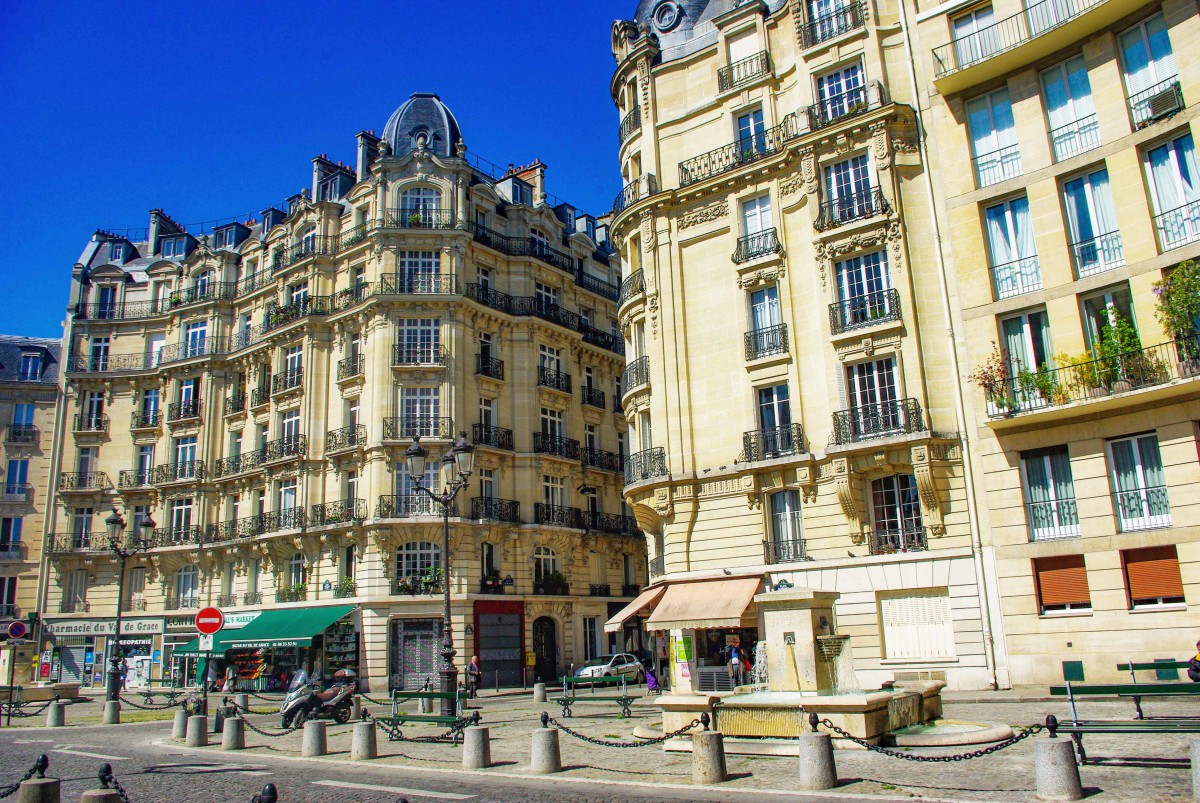
Parisian monuments in Euville stone
Euville stone can be found in the great Parisian buildings:
- the Paris Opera House from architect Charles Garnier
- the City-Hall of Paris (rebuilt after the fire of the Paris Commune in 1871)
- the Louvre wing built under Napoleon III
- the Grand Palais and the Petit Palais,
- the Alexandre III bridge
- the base of the Sacré-Cœur
- some metro stations
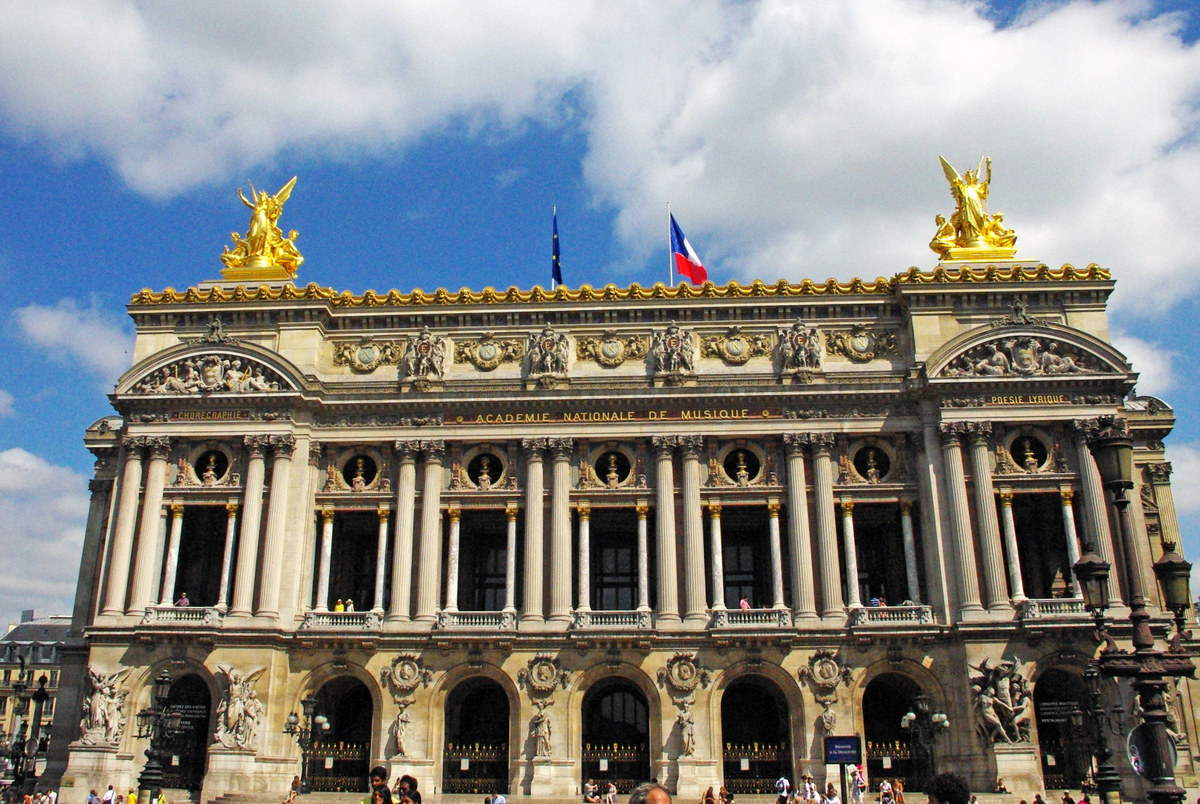


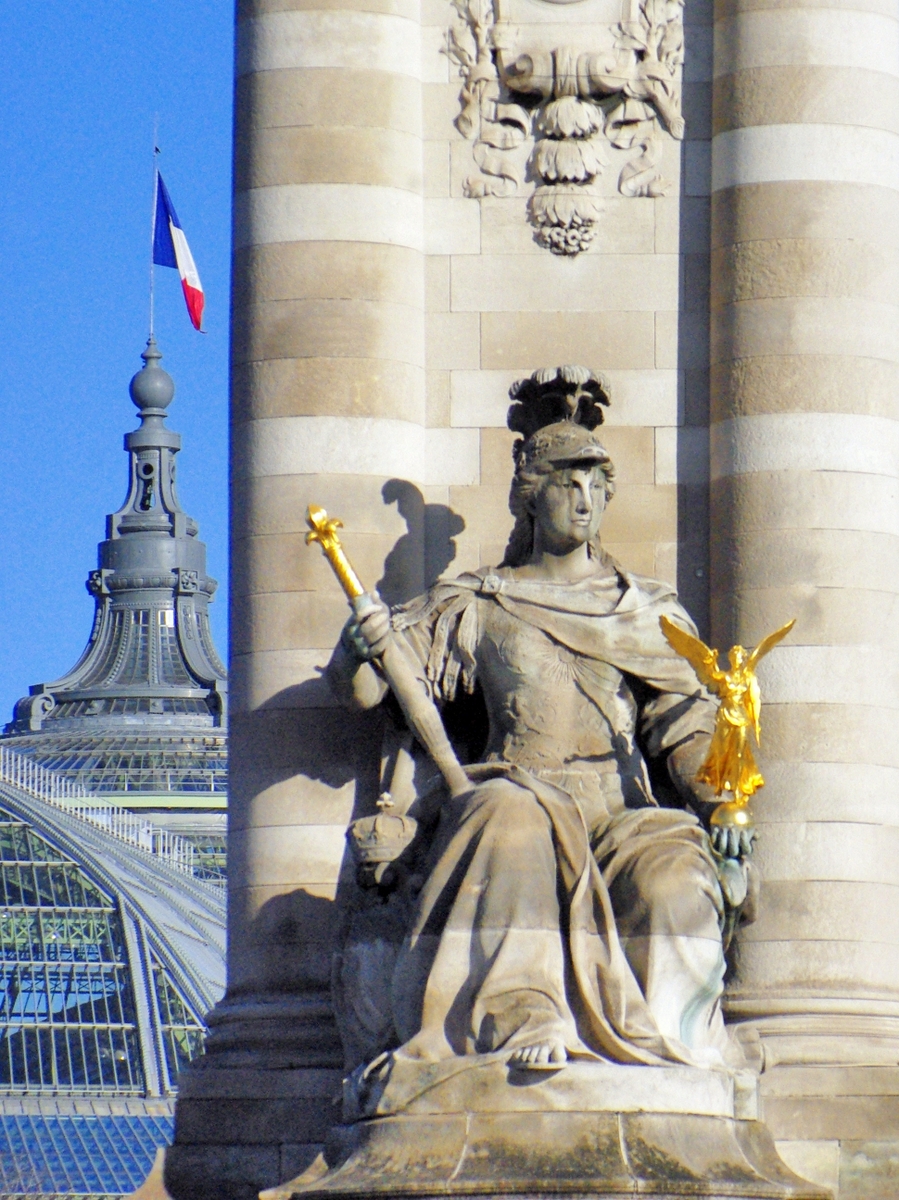
Are you arriving in Paris from Nancy or Strasbourg by train? Euville stone will welcome you at the Gare de l’Est!
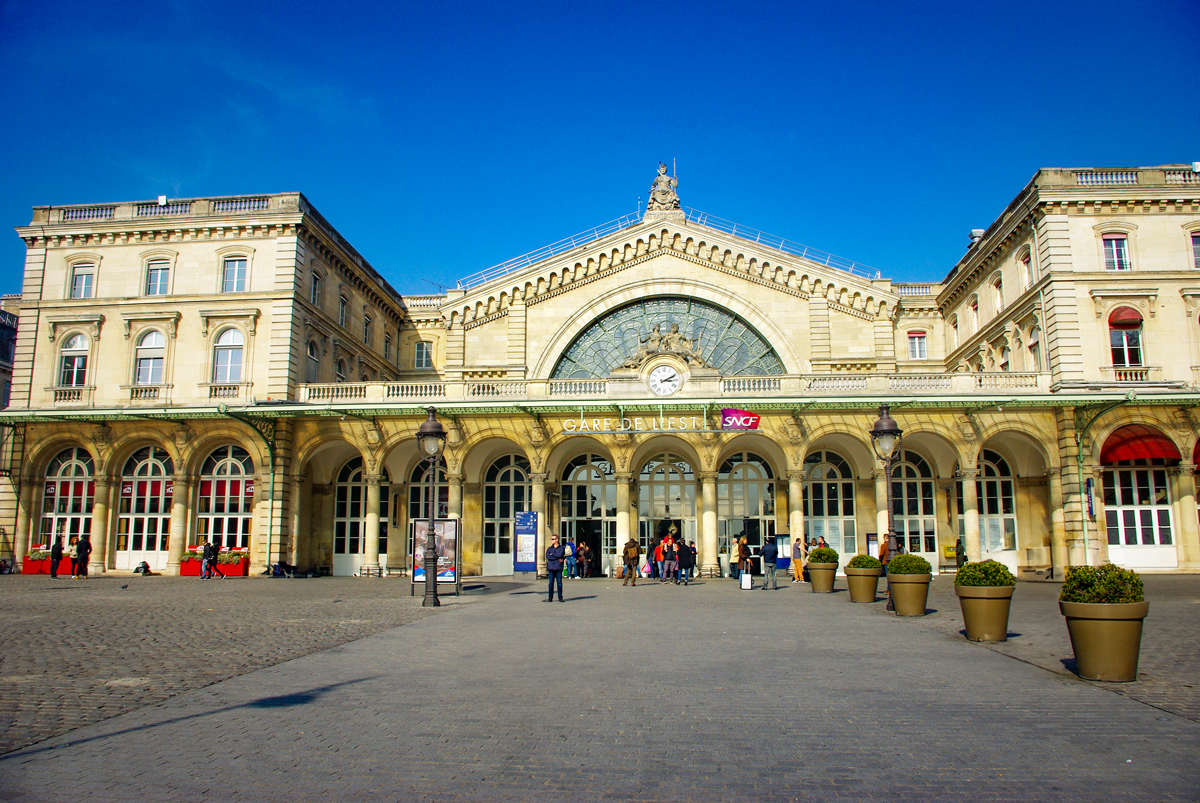
Euville Stone on the international scene
The reputation acquired by Euville Stone in Paris enabled it to open up to other markets, particularly in Belgium.
It was used in Brussels for the Palace of Laeken (the residence of the king of Belgium), the Fountain of the Place Brouckère and the Gare du Midi, and at the British Nieuport Memorial – a First World War memorial located in the Belgian port city of Nieuwpoort.
![Nieuport British Memorial © Marc Ryckaert - licence [CC BY-SA 4.0] from Wikimedia Commons](https://frenchmoments.eu/wp-content/uploads/2022/04/Nieuport-British-Memorial-©-Marc-Ryckaert-licence-CC-BY-SA-4.0-from-Wikimedia-Commons-scaled.jpg)
Euville stone, a victim of concrete!
But all good stories have an end.
And as Joseph Schumpeter (you know, the economist) used to say, the disappearance of productive activities is replaced by new activities due to technical progress.
This process has a name: creative destruction!
Thus, in the 20th century, the limestone of the Meuse was abandoned in favour of a newcomer, concrete.
Thus the Euville stone (almost) disappeared.
Fortunately, we still have these beautiful monuments to admire in all their splendour (and whiteness)!
Watch out for fake news!
To finish, let’s get rid of some of the nonsense we’ve come across here and there on the web!
Oh, these are just mistakes repeated over and over again.
There are two examples that I would like to reveal to you:
The Petit Pont Neuf in Paris
When I did my research, I often read that Euville stone had been used for the entablature of the “Petit Pont Neuf” in Paris in 1853.
However, if like me you have lived in Paris, you know that there is no bridge by this name.
So what is the “Petit Pont Neuf”?
It may refer to the Pont Neuf, which is the oldest surviving bridge in Paris today in its original form (well, even if it has been modified over the years). It hasn’t been rebuilt since so EXIT the Euville stone here.
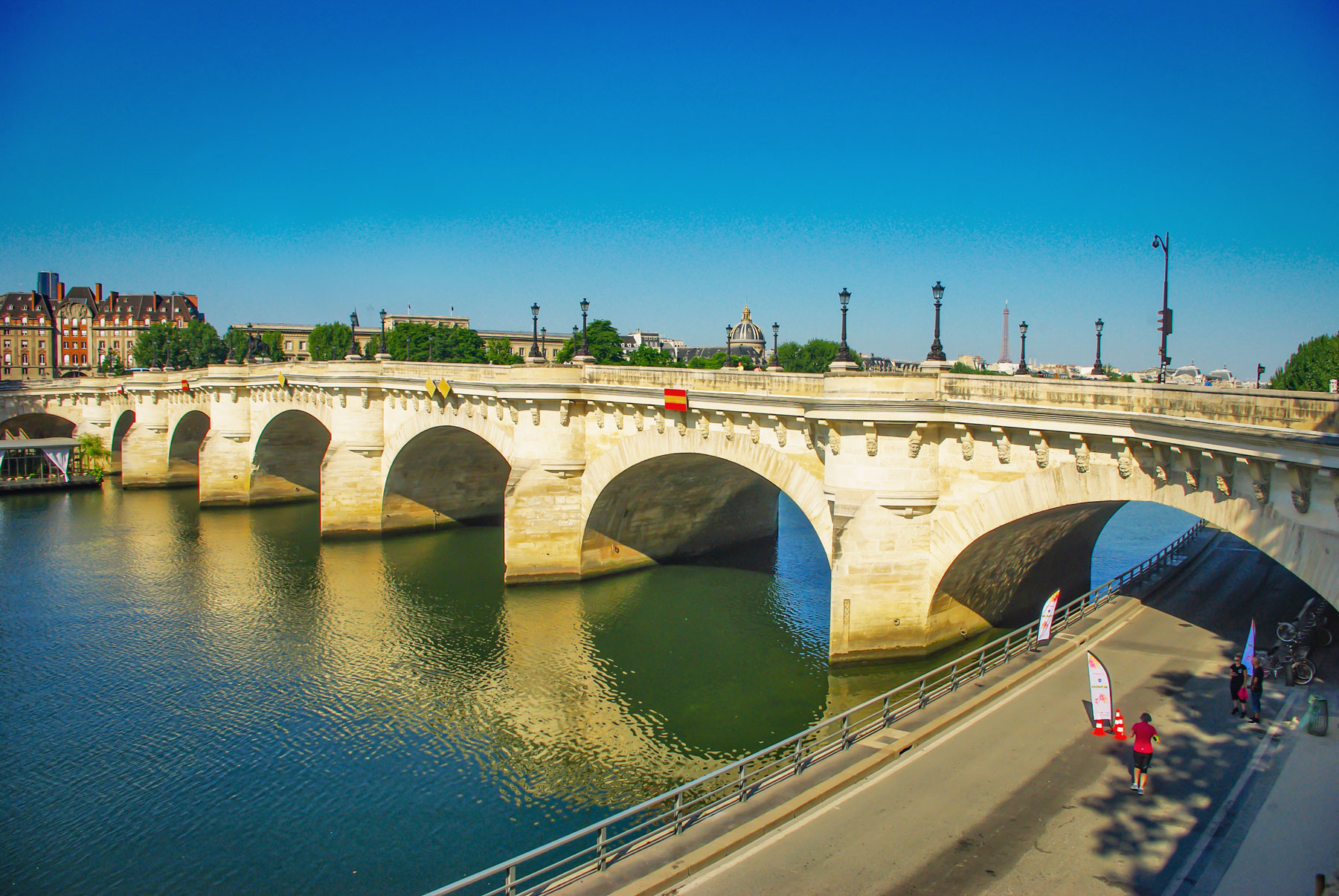
There is also the Petit Pont, linking the left bank to the Île de la Cité in the shadow of Notre-Dame cathedral. This bridge was rebuilt in 1853 (so the date fits). But so far I have not found any mention that it was made of Meuse stone.
And to complicate matters, since 2013 the bridge has had a new name: Petit-Pont-Cardinal-Lustiger.

The base of the Statue of Liberty in New York

The people of Lorraine would certainly be proud to tell everyone (and the Americans) that the base of the famous Statue of Liberty in New York is made of Euville stone.
For a long time, the Wikipedia article claimed that this was the case.
However, if you surfed to other pages, you would find that other French localities also took the glory!
Cassis stone in Provence, Chazelles stone in Charentes, Damparis stone in the Jura, Ruoms stone in Ardèche…
In fact, the base comes from quarries in Connecticut…
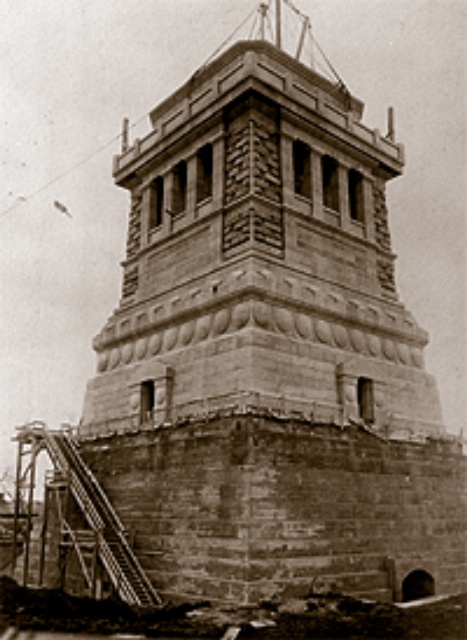
There is however a small consolation prize to be had.
According to my sources, it seems that the base of the Parisian replica of the Statue of Liberty (located on the Ile aux Cygnes) is made of Euville stone.
The honour of Lorraine is safe… and once again we are brought back to Paris!

Euville stone: to find out more
- Read this article in French on our blog Mon Grand-Est 🇫🇷
- Vosges sandstone: the emblematic stone of the Rhineland
- The Jaumont stone: the golden stone of Metz
- Discover the historical and cultural region of Lorraine
- The place Stanislas in Nancy is made of Euville st0ne!
- The Wikipedia article on the Euville stone [in French]
- The Euville stone in Toul [in French]
- About the last company that extracts the stone [in French]
The examples of constructions using Euville stone represent only a tiny fraction of the existing buildings and structures in Lorraine and Paris. If you know of any others that deserve to be mentioned in this article, please write their name in the comments below!
Euville stone on Pinterest
Pin it on Pinterest so you don’t forget the Euville stone!
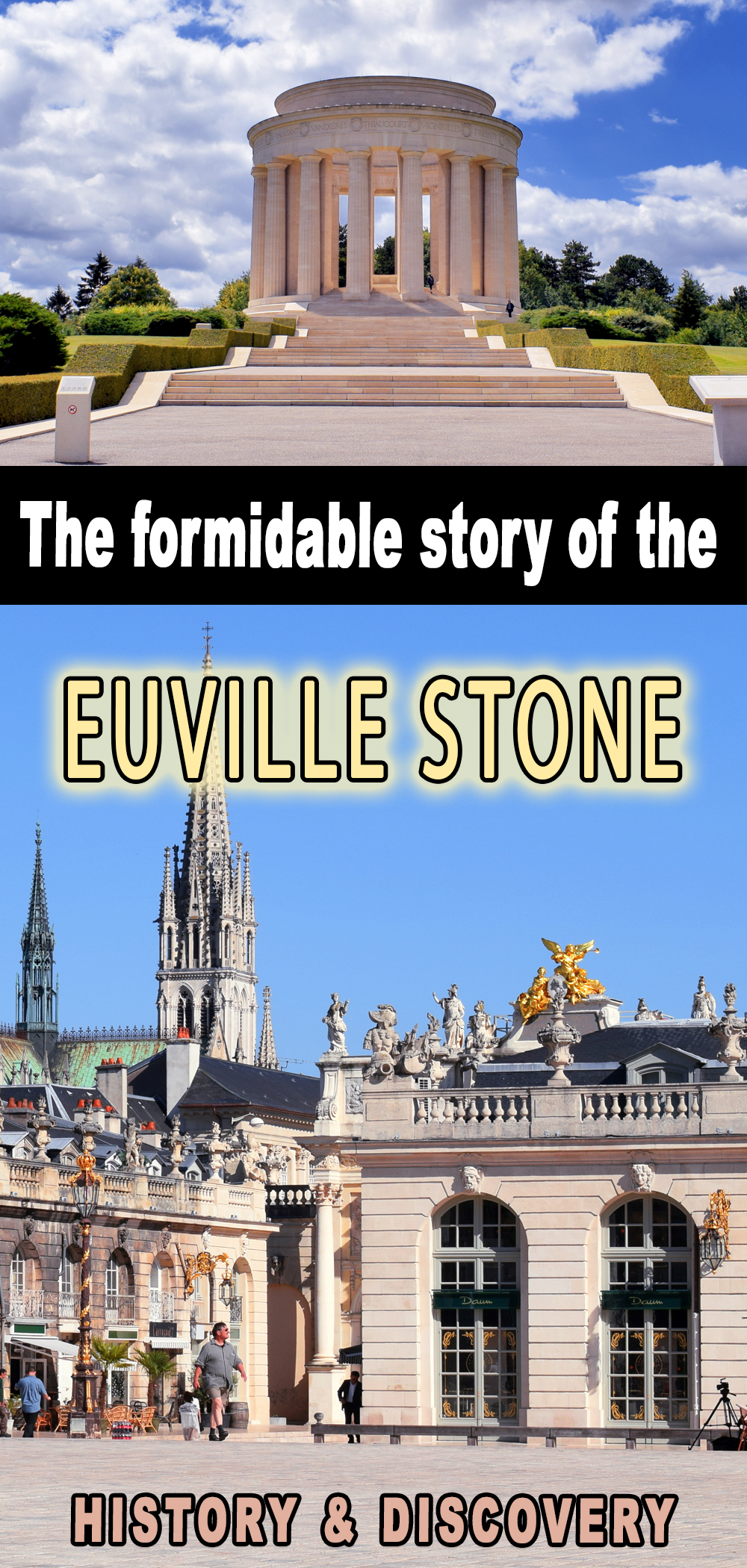





It's a beautiful stone – I had never heard of it! So I take it that it's different from the stone that Haussmann used for all his buildings? They're both limestone, n'est-ce pas? I love the subtle color.
Yes, it’s a beautiful stone although most of the Haussmannian houses of Paris were built using the local limestone.